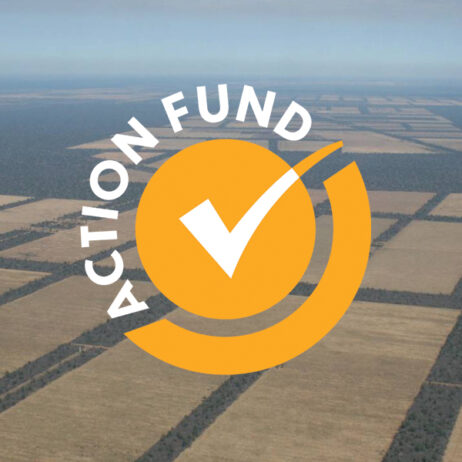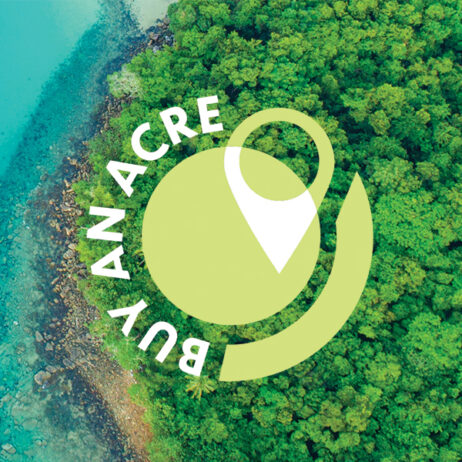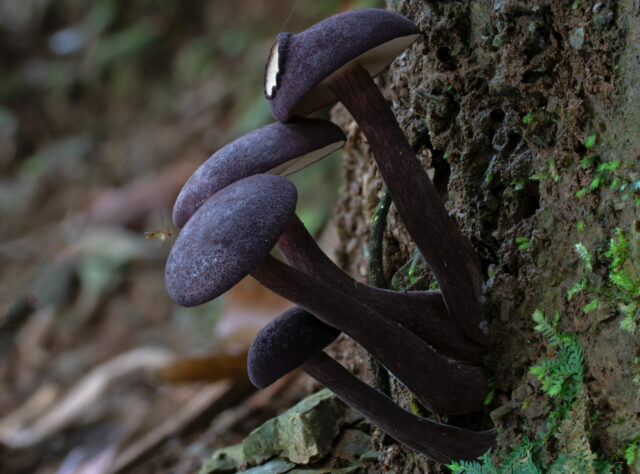
To recognise fungi only for its mushrooms is like being able to see acorns for a fleeting moment in a year but “never recognising the magnificent Oak trees they come from”, according to Merlin Sheldrake author of Entangled Lives: How Fungi Make Our Worlds, Change Our Minds, and Shape Our Futures. Credit: KTK-BELT
A campaign is on the rise to demand better protection for the world’s fungi. Named, ‘Flora, Fauna and Funga’, more than 1,300 scientists, researchers, activists and citizens from 77 countries have joined the initiative for fungi to be valued equally as plants and animals in global conservation efforts.
Both the United Nations Secretariat of the Convention on Biological Diversity and the International Union for the Conservation of Nature (IUCN) argue that nature conservation has historically neglected fungi. It wasn’t until the 1960s that fungi were thought to be plants. Today, fungi are recognised as a distinct ‘kingdom’ of life alongside five others including Animalia (animals), Plantae (plants), Bacteria, Archaebacteria and Protista. Latin American mycologists (people who study fungi) then established the term ‘funga’ in 2018 because there lacked an official collective word for plural fungi, equivalent to fauna and flora. Then, a significant milestone for the Fauna, Flora and Funga movement took place in August 2023, when the UN Convention on Biodiversity stated: “It is time for fungi to be recognised and protected on an equal footing with animals and plants in legal conservation frameworks #saytheirname”.

Mushrooms growing in clusters in WLT-supported reserve, Reserva Ecológica de Guapiaçu in Brazil’s Atlantic Forest which is protected by WLT partner REGUA. Credit: Chris Morris
A world shaped by fungi
Our world would look dramatically different without fungi. They include the yeasts, mildew and moulds that decompose organic matter, help with forest regeneration, carbon sequestration, global nutrient cycles, and cleaning up soil pollution. The first loaf of leavened bread was thanks to fungi, as was the moment that humans turned grape must into wine. There is even a fungus found in the Amazon that can break down plastic. We know a lot more about funga today than we did even 100 years ago. However, the biodiversity of funga remains relatively neglected across global conservation efforts despite its importance to ecosystem health.
It is estimated that almost 90% of the total number of fungi species have yet to be scientifically described. Of the 10% that have been documented, only 0.02% have had their global extinction threat level assessed.
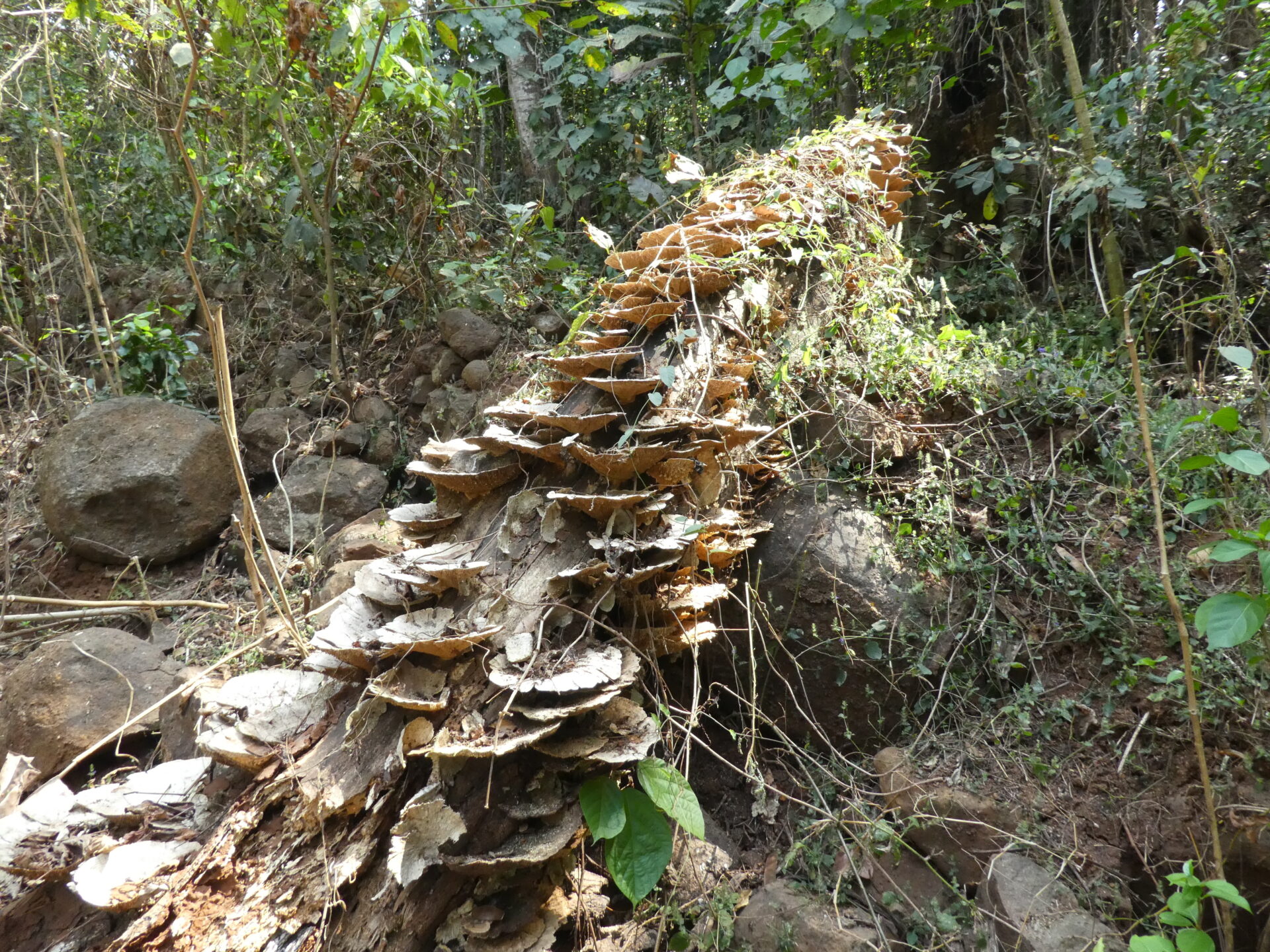
Bracket fungi in the Sacred Groves of India’s Western Ghats in which WLT partner AERD work. Credit: Richard Cuthbert/WLT
Relationship gurus
Fungi demonstrate a basic principle of ecology in practice: the relationships between organisms. Though some might think of fungi as synonymous with mushrooms — like those familiar in the vegetable aisles of supermarkets or growing on fallen tree trunks — these are actually the fungi’s fruiting body. Many fungi species don’t produce mushrooms at all. Beneath the soil’s surface, in a damp, nutritious layer is where most of the fungal organism lives.
The fungus interweaves itself with tree and plant roots in a vast network made up of mycelium. This is the part of the fungi that connects to individual plants, transferring resources like water and nitrogen. There are symbiotic “arrangements” made by mycelium with plant roots — a relationship that occurs in most plants and has existed for roughly 400 million years. Fungi are also involved in a wider mycorrhiza network which connect individual plants together to transfer water, nitrogen, carbon and other minerals. In return, the plant offers the fungus energy-rich sugar. Through this underground network, trees are known to “communicate” with each other.
Protecting the places where fungi grow can in turn help protect whole habitats. In Mexico’s Cuetzalan Cloud Forest Amphibian Sanctuary, protected by WLT partner Conservación de Anfibios A.C., lives the Mycena punkissima, a tiny fungus that grows in dead leaves of the Oak trees found in this reserve.

Mycena punkissima a fungus recorded in the Cuetzalan Amphibian Sanctuary in Mexico’s Puebla state. Credit: Pedro Luna
The many ways of being a mushroom
Fungi are wildly diverse. There are six times more species of fungi than plants on Earth. Whilst some can be micro-metres in length, a single colony of the ‘humongous fungus’ Armillaria ostovae in the United States weighs to 605 tons — “four times heavier than a Blue Whale,” says Jon Paul Rodríguez, Chair of the IUCN Species Survival Commission.
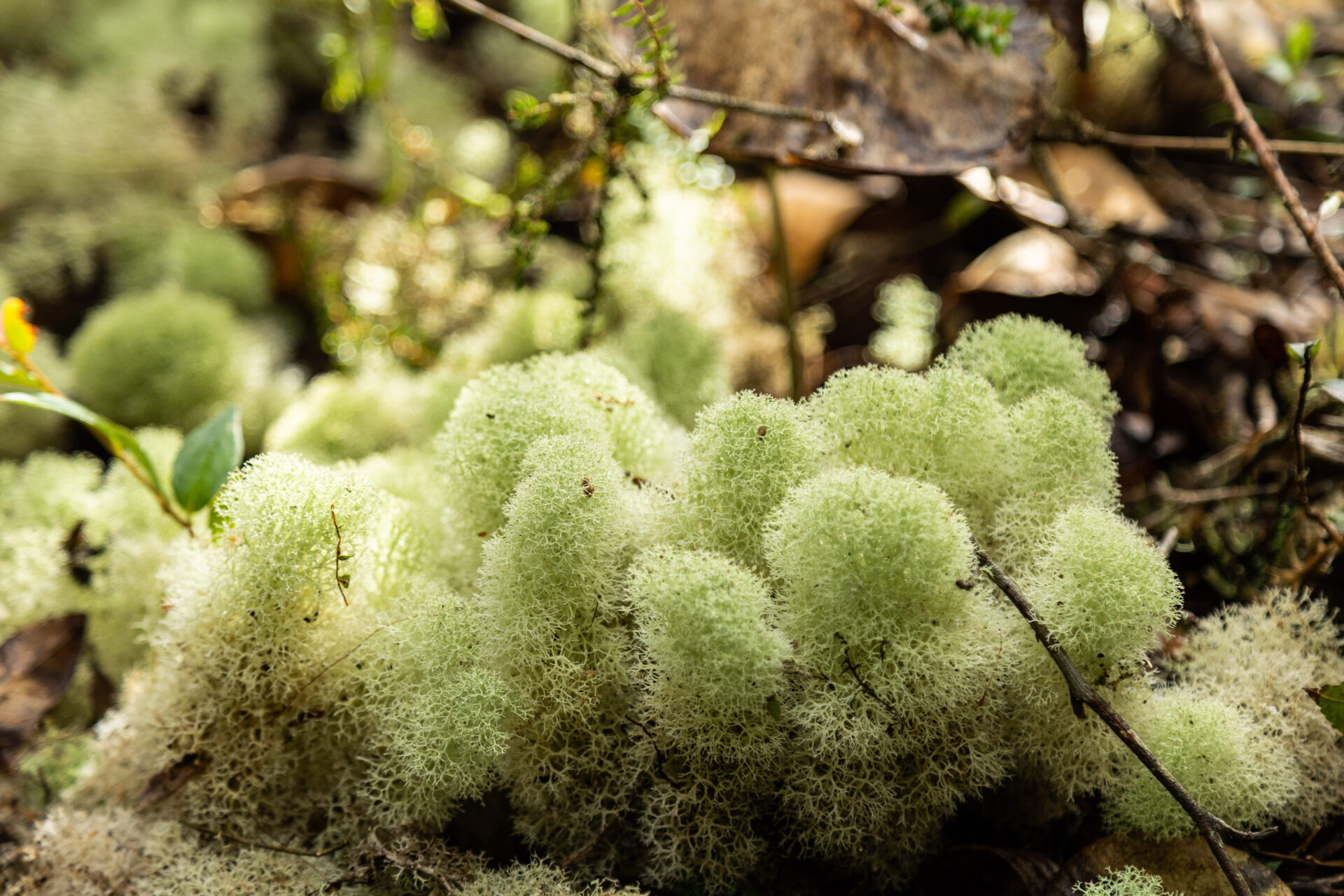
A species of Cladonia, a lichen in the Guanacas Reserve in Colombia, protected by WLT partner Fundacion Guanacas. Lichens need fungi to exist and live in the filaments of some fungi species in a mutualistic relationship. Credit: Andrea Ferreira
In the region of Zambia where WLT partner Kasanka Trust work lives the Termitomyces titanicus, referred to regionally as ‘Tente’ in the local Bemba language. It has a fruiting body measuring up to one metre in diameter on a stem up to 55 centimetres in length. It gets its name from its coexistence with termites whose faecal matter gives the mushroom something to grow upon along the floor of the native Miombo woodlands. When the fungus breaks down, it provides food for the termites. Local communities also harvest this wild mushroom which provides them with essential nutrients. Kasanka’s work conserving the Miombo forests is vital for this fungi’s future.
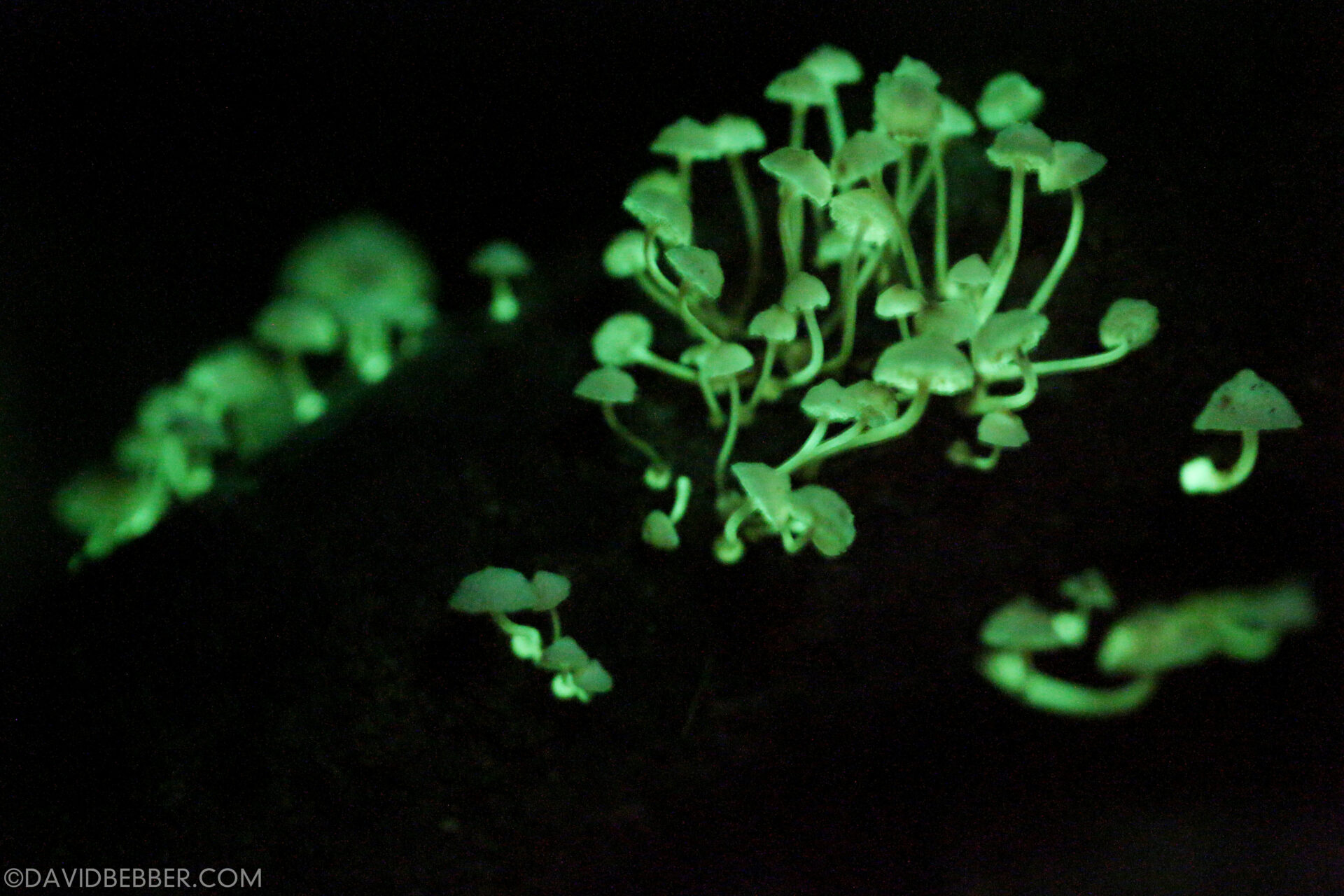
This bioluminescent fungi exists in Malaysian Borneo where WLT partner HUTAN work, along the Kinabatangan River in Sabah. Credit: David Bebber
The future of fungi
Because fungi are entangled with the existence of plants and animals, they share similar threats: deforestation, climate crisis, and pollution. The increased use of fungicides, as well as overharvesting and nitrogen enrichment of soil in agriculture, are harming funga worldwide. This can be addressed, as the Flora, Fauna and Funga campaign asserts, by getting funga written into conservation, environmental and agricultural policy and protecting it under international and domestic law. Chile is leading the way in this regard, being the first and only country to have included funga in its environmental protection laws.
“Accounts of the living world that do not include fungi are accounts of a world that doesn’t exist… We are unthinkable without them, and yet we are only just beginning to understand the intricacies of fungal lives. It’s time we give them the attention they deserve.” says Merlin Sheldrake and Giuliana Furci from the Fungi Foundation, powerfully testifying why we must speak of funga more.
WLT is constantly learning more from our vast network of partners about the diversity of fungi that live in certain WLT-supported areas. Our priority has always been to protect ecosystems as an interconnected whole; an essential approach for protecting the soils in which fungi grow. By saving land, we are saving species – many of which we have yet to document and continue to learn more about. are still learning more about. Click here to support WLT in preventing habitat loss and to protect ecosystems around the world.
Click here to learn more about the state of the world’s fungi.
